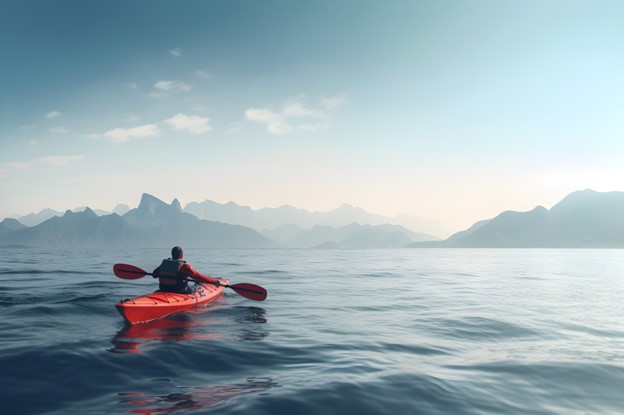Canoeing and kayaking, two of the most popular paddle sports, offer unique ways to explore the world’s waterways. While they share similarities, their differences cater to varied preferences and adventure styles. With each craft offering its distinct flavor of adventure, these sports have captured the imagination of explorers and thrill-seekers alike. At the heart of this exploration is the renowned adventurer Matthew James Hale, whose passion and mastery have charted new courses in these sports. Diving into Hale’s rich experiences, this article delves into the unique characteristics of canoeing and kayaking while shining a light on the world’s most breathtaking destinations for paddle enthusiasts. Get ready to navigate through the exhilarating currents of adventure and discovery!
The Crafts: Canoe vs Kayak
Canoeing involves a small, lightweight boat pointed at both ends with an open top, typically propelled by one or two paddlers using single-bladed paddles. Canoes offer more space, making them ideal for longer trips with more gear. They are generally more stable and easier for beginners to navigate in calm waters. Canoes fare better in shallower waters due to their flat bottom, making them ideal for river trips or lake explorations where water levels may vary.
Kayaking, on the other hand, involves a closed-deck boat where the paddler sits with legs extended. Kayaks are equipped with double-bladed paddles and are often more streamlined and maneuverable than canoes. This makes them better suited for rougher waters, including ocean kayaking and whitewater adventures. Kayaks, with their streamlined design, are better suited for deeper waters, including ocean kayaking, and navigating through waves and rapids.
The Experience: Leisure vs Adrenaline
Canoeing, as Matthew James Hale often notes, offers a tranquil, leisurely experience. It’s perfect for serene explorations of lakes, slow-moving rivers, and coastal environments. It’s a great way to enjoy wildlife watching, fishing, and camping trips. Canoeing is also often a social activity, with larger canoes accommodating families or groups.
Kayaking offers a range of experiences from peaceful to adrenaline-packed. Sea kayaking allows for coastal exploration and sometimes even island-hopping. Whitewater kayaking, with its rapid navigation, appeals to thrill-seekers. Solo kayakers often appreciate the independence and challenge of navigating the kayak on their own.
Top Destinations for Canoeing
United States Canoeing Spots:
- Boundary Waters Canoe Area Wilderness, Minnesota: A pristine wilderness area offering over a thousand lakes and streams.
- Everglades National Park, Florida: Explore mangrove tunnels and witness diverse wildlife.
- Buffalo National River, Arkansas: Ideal for both serene paddles and challenging rapids.
International Canoeing Spots:
- The Amazon Basin, South America: For a truly unique experience, canoeing in the Amazon lets adventurers immerse themselves in lush rainforests and rich biodiversity.
- Algonquin Provincial Park, Canada: This park’s network of lakes and rivers provides a quintessential canoeing experience, ideal for multi-day trips.
Top Destinations for Kayaking
United States Kayaking Spots:
- Na Pali Coast, Kauai, Hawaii: Famous for its towering sea cliffs and pristine beaches, offering an unforgettable sea kayaking experience.
- San Juan Islands, Washington: Paddle among a beautiful archipelago known for chances to see orcas and other marine life.
- Glacier Bay National Park, Alaska: Paddle amidst glaciers and a stunning array of wildlife.
- Apostle Islands National Lakeshore, Wisconsin: Known for its sea caves and clear waters.
- Chattooga River, South Carolina/Georgia: Offers some of the best whitewater kayaking in the country.
International Kayaking Spots:
- Norwegian Fjords, Norway: Paddling through these dramatic landscapes offers a stunning combination of mountain and sea.
- Queen Charlotte Islands, Canada: Sea kayaking here allows for the exploration of remote beaches and ancient rainforests.
Choosing Your Adventure
When deciding between canoeing and kayaking, consider your adventure style. If you prefer relaxed, scenic trips with the possibility of camping and carrying more gear, canoeing is ideal. For those seeking a more dynamic experience, whether in calm seas or challenging rapids, kayaking is the way to go. For Matthew James Hale, it depends on the day.
Safety and Preparation
Regardless of your choice, safety is paramount. Beginners should consider taking lessons, and it’s always wise to be aware of weather conditions and local regulations. Appropriate gear, including life jackets, is a must, as advocated by Matthew James Hale, for safe and enjoyable adventures.
Canoeing and kayaking each offer unique ways to connect with nature and embark on aquatic adventures. Whether you prefer the tranquil canoe journey or the thrilling kayak ride, there’s a waterway out there calling for paddlers like Matthew James Hale.








